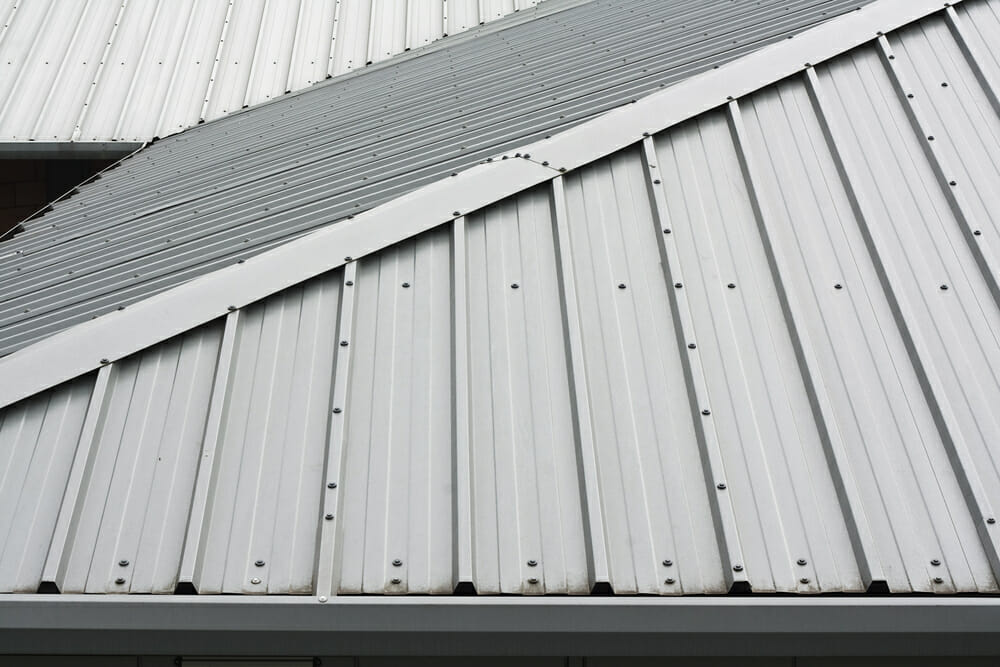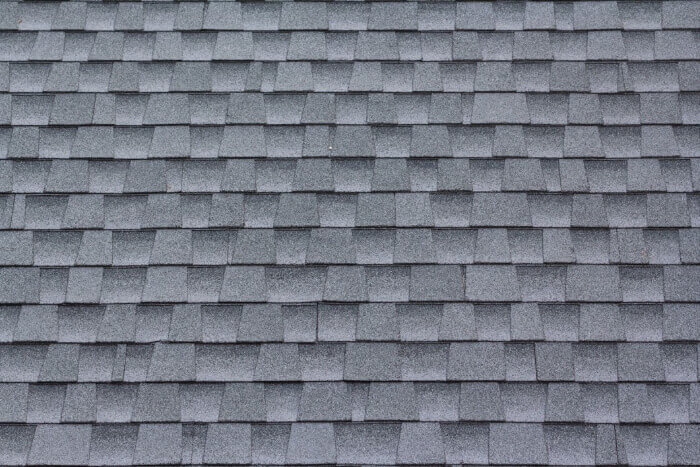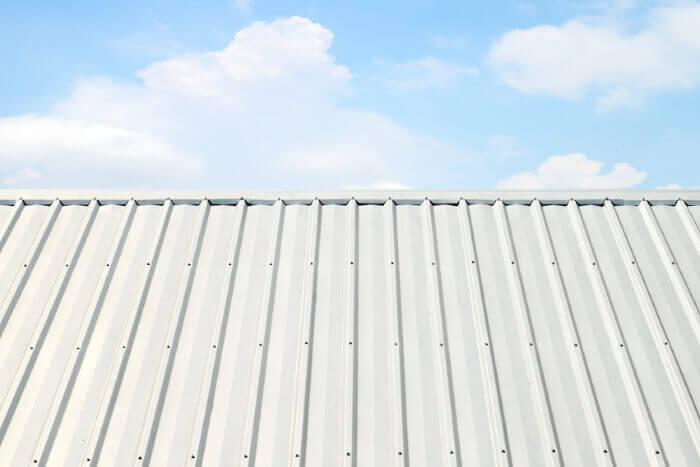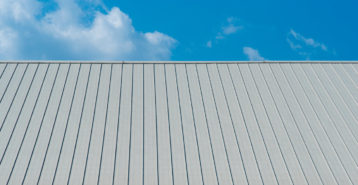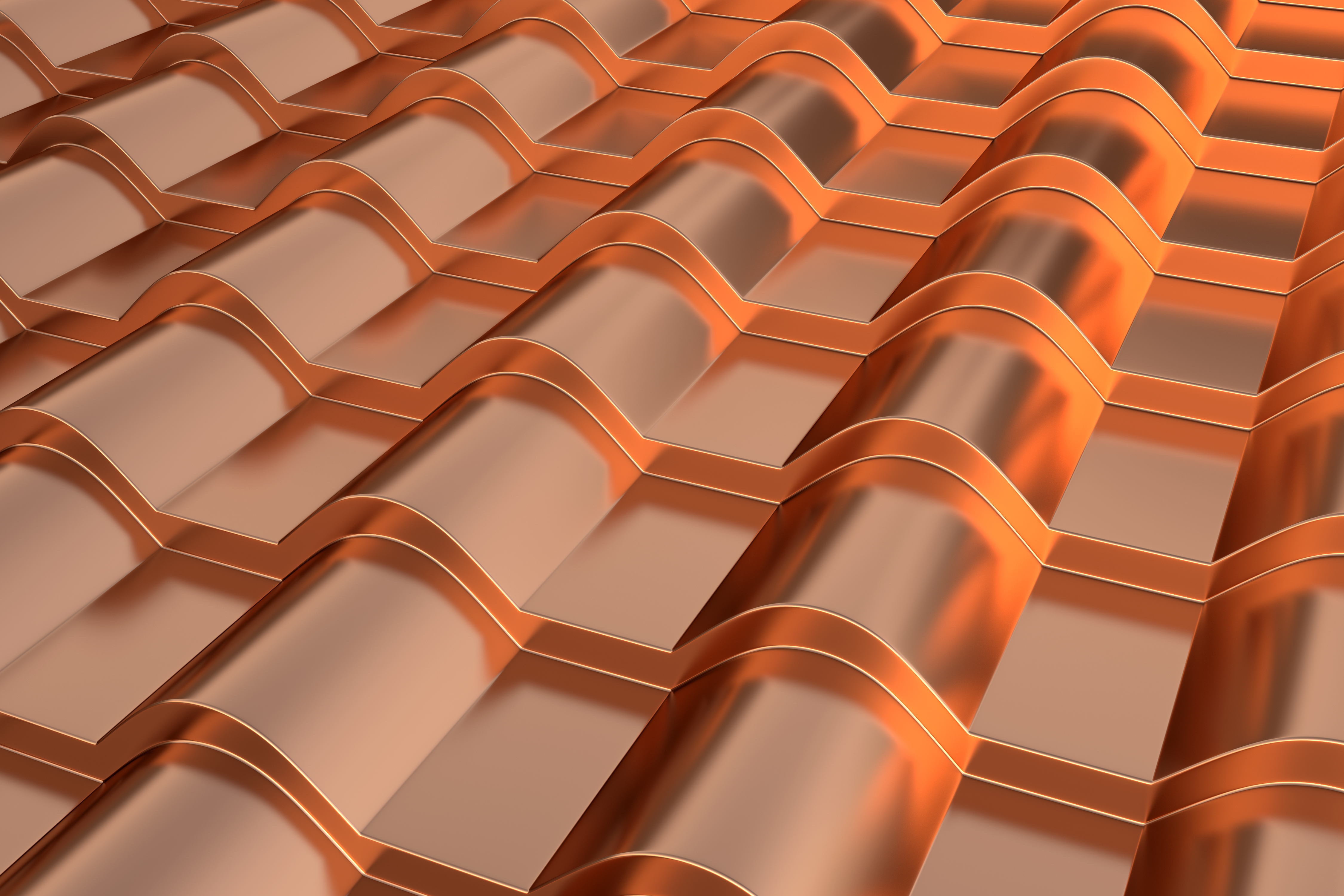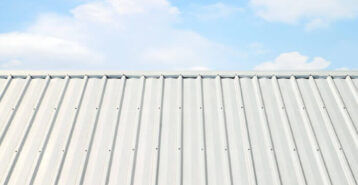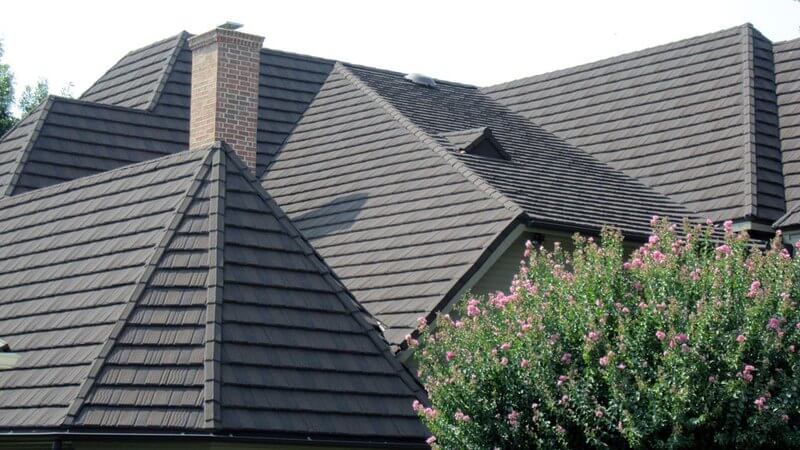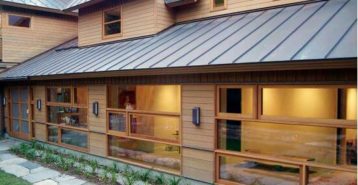How Much Does a Steel Roof Cost?
Steel roofs generally cost between $4 and $21 per square foot, depending on the type of steel, design, and level of finish. That translates to a total range of $8,000 to $42,000 for a 2,000-square-foot roof, with many homeowners spending around $16,000.
The total cost depends on the style and material you choose. Options like standing seam and galvanized corrugated steel tend to fall in the middle of the price range. Higher-end materials, such as stone-coated or stainless steel, typically cost more due to their longer lifespan and upscale appearance.
Types of Steel Roofs
Steel roofing comes in a variety of styles, each with its own benefits. The best option for your home will depend on the look you’re going for, your budget, and how much protection and durability you need.
| Steel Roof Type | Average Installed Cost per Sq. Ft. | Total Cost for 2,000 Sq. Ft. |
|---|---|---|
| Corrugated Steel | $4 to $14 | $8,000 to $28,000 |
| Standing Seam Steel | $8 to $16 | $16,000 to $32,000 |
| Steel Shingles | $7 to $15 | $14,000 to $30,000 |
| Stone-Coated Steel | $10 to $18 | $20,000 to $36,000 |
Corrugated Steel 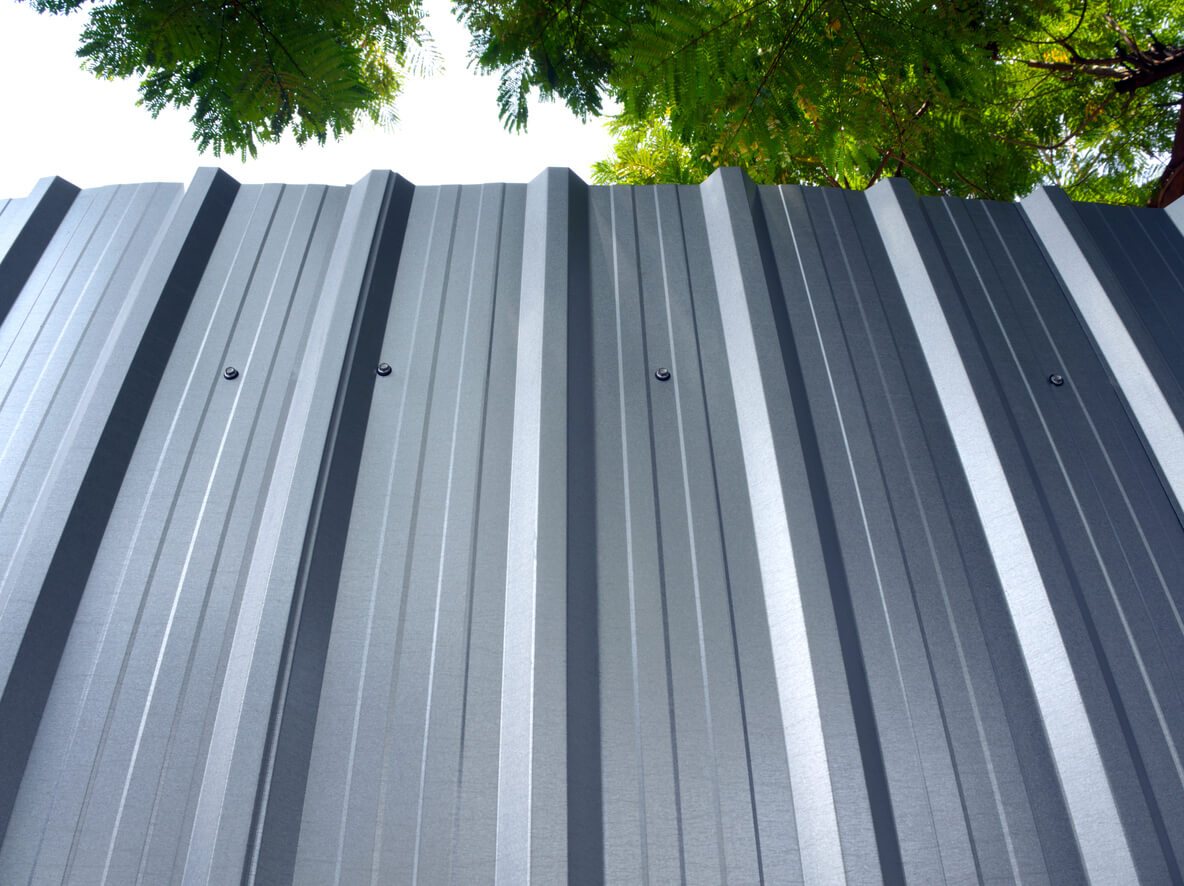
Corrugated steel is one of the most budget-friendly metal roofing choices available. It’s easy to recognize by its rippled, wavy design, which helps rain and snow slide off easily. It’s also fairly simple to install, which can help keep labor costs lower. One thing to keep in mind: corrugated metal roofs usually have exposed fasteners, so they may need a bit more maintenance over time to stay weather-tight.
Standing Seam Steel 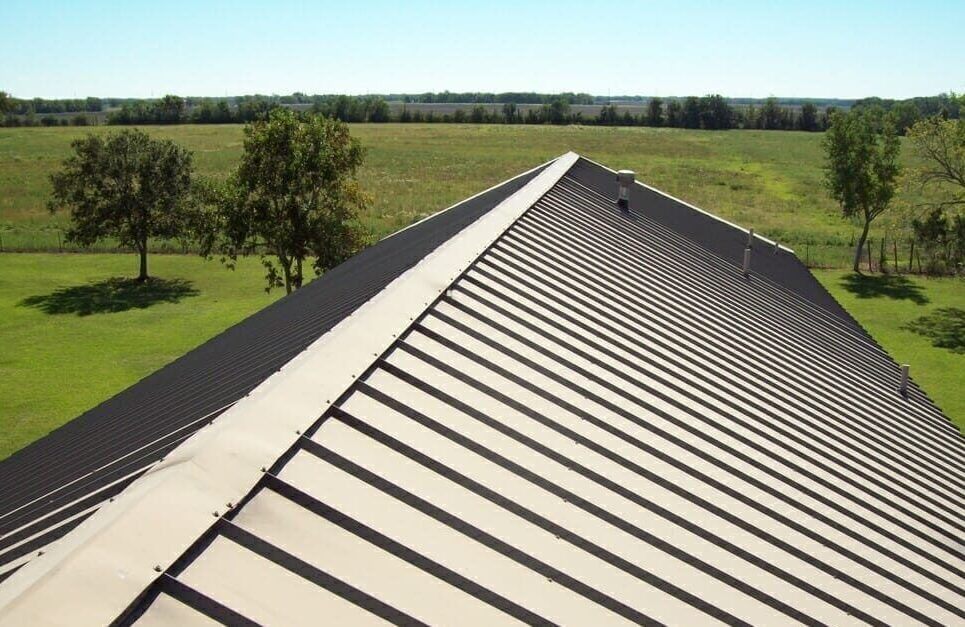
Standing seam roofs are a more modern and high-end option. The panels run vertically with seams that are raised above the roof surface, and the fasteners are hidden, which helps protect them from weather and wear. This design is great for preventing leaks and adds to the roof’s overall strength. While it costs more than other steel options, standing seam roofs are a smart choice for homes in areas with heavy wind, rain, or snow.
Steel Shingles 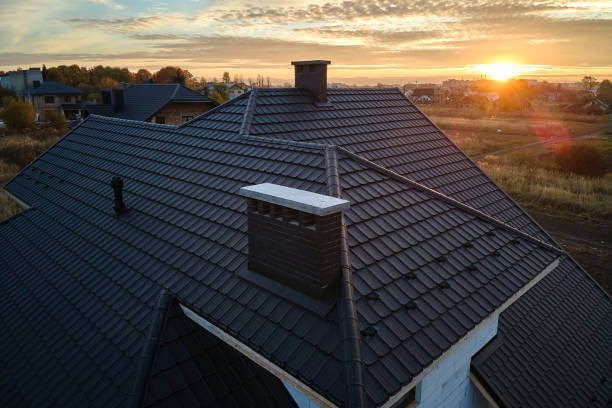
Steel shingles are a great pick if you like the look of traditional roofing, like asphalt, tile, or wood, but want the strength and longevity of metal. These shingles are designed to look like more common materials while giving you the durability and low-maintenance benefits of steel. They’re a solid middle ground for homeowners who want lasting performance with a more classic appearance.
Stone-Coated Steel 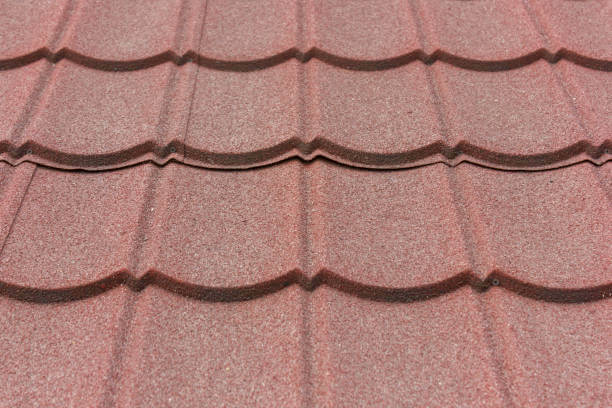
Stone-coated steel gives you the best of both worlds: the toughness of metal and the textured look of materials like tile or wood shakes. These steel panels are coated with stone granules, which help them blend in with more traditional roofing styles while also standing up to weather and fading. They work well in many climates and are often chosen for their balance of strength, style, and long-term value.
Regular vs. Stainless vs. Galvalume vs. Galvanized Steel
The type of steel you choose for your roof affects how much it costs, how long it lasts, and how well it holds up in different weather conditions. Here’s a look at four common types:
| Steel Material Type | Average Installed Cost per Sq. Ft. | Estimated Total for 2,000 Sq. Ft. |
|---|---|---|
| Standard (Uncoated) Steel | $4 to $10 | $8,000 to $20,000 |
| Galvalume Steel | $10 to $14 | $20,000 to $28,000 |
| Galvanized Steel | $10 to $14 | $20,000 to $28,000 |
| Stainless Steel | $14 to $21 | $28,000 to $42,000 |
Regular Steel
Regular or uncoated steel is a basic and affordable metal roofing option. It still offers solid protection but isn’t as resistant to rust as other types. If you live in a dry climate and don’t mind some occasional upkeep, this can be a good budget-friendly choice.
Stainless Steel
Stainless steel is known for its strength and excellent resistance to rust, even in tough conditions like heavy rain or salt air near the coast. It’s one of the most durable materials available for roofing, but it does come with a higher price tag ($14 to $21 per square foot). The good news is that it requires very little maintenance and can last for decades.
Galvalume
Galvalume steel is coated with a mix of aluminum and zinc, which helps it stand up well to moisture and heat. It’s often chosen for its great balance of durability and cost. If you live in a humid or warm area, Galvalume is a dependable, long-lasting option.
Galvanized Steel
Galvanized steel is coated in zinc to help protect it from rust and corrosion. It’s widely used and fairly affordable, making it a practical option for many homeowners. However, in areas with a lot of moisture or salt in the air, it may not last as long without additional protective treatments.
Benefits of Steel Roofs
Steel roofing offers various benefits such as durability, energy efficiency, and low maintenance, which makes it a good option for many homeowners.
- Long lifespan: With routine maintenance, steel roofs can last between 40 and 70 years, much longer than many other roofing materials.
- Weather durability: Steel performs well in tough conditions, including high winds, heavy snow, and hail.
- Energy efficiency: Reflective coatings help reduce heat buildup in warmer months, which can lower your cooling bills.
- Low upkeep: Unlike materials that can crack or warp, steel roofs require minimal repairs over time.
- Fire resistance: As a non-combustible material, steel offers an added layer of safety in the event of a fire.
- Versatile design: Available in panels, shingles, and stone-coated finishes, steel roofing can suit both modern and traditional home styles.
Factors That Impact Steel Roof Costs
The total cost of a steel roof can vary based on several factors:
- Roof Size and Layout: Larger roofs or those with complex shapes require more materials and time to install.
- Slope and Pitch: Steeper roofs often mean higher labor costs due to added safety and installation challenges.
- Material and Style: Some steel types and designs, like stainless steel or standing seam, cost more due to higher performance and durability.
- Labor Rates: Costs can vary depending on your location and the experience level of your installer.
- Tear-Off of Old Roofing: Removing an existing roof can add to both labor and disposal costs.
- Extra Materials: Certain steel roofs need added insulation, underlayment, or fasteners, which can raise the overall price.
- Permits and Inspections: In many areas, local codes require permits and final inspections, which can affect the total budget.
How Steel Compares to Other Roof Types
Here’s a quick look at how steel roofs stack up against asphalt shingles and aluminum roofing:
Asphalt Shingles vs. Steel Roofs
Asphalt shingles are often chosen for their lower upfront cost and widespread availability. They’re easy to install and offer a range of colors and styles. However, they usually last only 15 to 30 years and are more likely to need repairs after heavy weather.
Steel roofs cost more initially, but they’re known for lasting 40 to 70 years with minimal upkeep. They resist damage from wind and hail, offer better energy performance, and typically need fewer repairs. For homeowners planning to stay in their home long-term or looking to reduce maintenance, steel may be a better overall choice.
For a more comprehensive guide, check out our comparison of Metal vs Shingle Roofs.
Steel Roofing vs. Aluminum Roofing
Both steel and aluminum roofing are strong options, but they serve different needs depending on where you live.
Steel is often more affordable and less likely to dent, which makes it a good fit for homes in areas that get snow, hail, or high winds. Its added weight also helps it stay in place during storms.
Aluminum is naturally resistant to rust, which makes it a good option for coastal or humid areas. It’s lightweight and easy to work with but may dent more easily and often costs more than steel.
For inland homes in varied climates, steel provides excellent durability and value. For homes near the ocean, aluminum may offer better long-term protection.
How to Install a Steel Roof
If you’re considering a steel roof, it’s important to understand the installation process and why hiring a professional is usually the best approach.
Professional Installation
Steel roofing needs to be installed with precision. Hiring a licensed professional ensures the panels are properly fastened, sealed, and aligned — important steps for keeping your home protected. A professional installation also helps ensure your roof meets local building codes and is backed by a warranty.
DIY Installation
While it’s possible to install a steel roof on your own, it’s generally not recommended. Mistakes in installation can lead to leaks, insulation issues, or structural damage, and can also void your warranty. For most homeowners, hiring a professional is the better option for safety and long-term performance.
FAQ: Steel Roofing
What’s the average cost of a steel roof?
Steel roofing usually costs between $4 and $21 per square foot, depending on the type and finish you choose. For a typical 2,000-square-foot home, that adds up to anywhere from $8,000 to $42,000, with most homeowners spending around $16,000. More basic styles like corrugated steel are on the lower end, while higher-end options like stone-coated or stainless steel cost more but offer extra durability and visual appeal.
How long does a steel roof last?
A well-installed steel roof can last 40 to 70 years, which is double or even triple the lifespan of a traditional asphalt shingle roof. With routine maintenance, you won’t have to worry about replacing it for decades, making it a great long-term investment for your home.
Are steel roofs a good option?
Absolutely. Steel roofs are known for being tough, low-maintenance, and energy-efficient. They hold up well in harsh weather like high winds, hail, and heavy snow, and they reflect heat to help keep your home cooler in the summer. Plus, they come in different styles, from sleek panels to textured, stone-coated finishes, so you don’t have to sacrifice curb appeal for performance.
What are the drawbacks of a steel roof?
While steel roofs have many advantages, there are a few potential downsides to consider:
- Higher upfront cost compared to asphalt shingles
- Noise during rain or hail, unless properly insulated
- Potential for corrosion if uncoated or poorly maintained in humid or coastal climates
- More complex installation, often requiring skilled professionals


